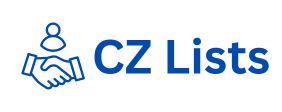Proper recognition is a secret weapon for reducing staff turnover. Studies show that employee appreciation is a vital driver of employee experience and workplace culture, leading to improved retention. HR specialists also highlight its positive impact on business outcomes such as ROI, productivity, and financial results.
However, many leaders struggle to achieve tangible results with employee appraisal. This guide, Aniday will explore how recognition can help lower turnover rate and boost your retention rate through effective recognition.
How recognition can help lower turnover rate-001
The Role of and Rewards Programs in Employee Turnover
It should come as no surprise that rewards and are major factors in employee turnover. Studies have consistently demonstrated that workers who experience a sense of worth and appreciation are more likely to stay with their company, whereas workers who feel unappreciated are more likely to quit.
To establish a robust recognition and rewards program, consider implementing the following strategies:
Authentic and Specific Recognition: Generic compliments or rewards may not carry the same weight as sincere and specific praise. Take the Canada Business Email List time to observe and acknowledge what your employees excel at, and communicate your genuine appreciation for their efforts.
Innovative Rewards: While monetary bonuses are a popular choice, alternative methods of showing appreciation can be equally effective. Explore options like offering unique experiences, flexible work hours, or additional time off to diversify your recognition approach.
Cultivate a Recognition Culture
Foster a workplace culture where recognition is ingrained into the organization’s DNA. Encourage all levels of staff, from senior management to front-line employees, to openly acknowledge and commend outstanding achievements. The more people feel comfortable both giving and receiving recognition, the more profound the impact it will have on reducing turnover.
The Correlation Between Recognition, Rewards, and Employee Productivity
It is obvious that employee productivity and recognition and incentives programs are related. Workers who feel that their efforts are recognized and valued are typically more productive than those who do not. Furthermore, employees’ engagement and job happiness are increased when they frequently receive awards and acknowledgment for their hard work.
Therefore, to enhance employee productivity, it’s imperative to maintain effective and rewards programs. By doing so, you can not only retain your most valuable employees but also witness a substantial increase in overall workforce productivity.
How Often to Give Recognition
How recognition can help lower turnover rate-002
Let’s address the timing of recognizing your team’s efforts. Should it be done monthly, quarterly, or yearly?
You should offer verbal praise to your team members at least once a week because it’s vital to realize that without ongoing recognition, employees might start questioning their significance in the organization. They could wonder, “If no one seems to care, what’s the purpose of my efforts?”
The positive impact of recognition, akin to a dopamine boost, tends to fade relatively quickly. To establish a continuous loop of motivation, consistent exposure to praise is essential.
Giving your team members a pat on the back once a year won’t suffice. To maintain engagement and productivity, it’s crucial to provide feedback and recognition on a weekly basis..
Four Awesome Methods for Employee Recognition
How recognition can help lower turnover rate-003
1. Implementing Peer Recognition
Colleagues are the individuals your employees spend the most time with. They understand the ins and outs of the job, making peer recognition feel more genuine than from you, the manager.
You might be wondering, “How can I introduce peer recognition? Are there tools available to facilitate this process?”
The good news is that there is a variety of technology options, from dedicated Slack channels like #kudos to comprehensive recognition apps. One tool worth considering is Hi5, which empowers co-workers to offer real-time recognition to each other. At the end of each day, your employees receive a list of their colleagues, allowing them to give a virtual “high five” along with GIFs or images. In return, each person receives one or more “high fives.” Pretty cool, right?
However, it’s important to note
That peer-to-peer recognition is CZ Lists just one facet of a broader employee recognition program. Let’s delve into how you can excel in recognizing your team members.
2. Align Recognition with Effort
Let’s consider a scenario: Raj, who devoted extra hours on a Friday to complete a time-sensitive project, and Tattiana, who devised a groundbreaking solution with the potential to save your company a substantial sum in the long run. Kudos to both


